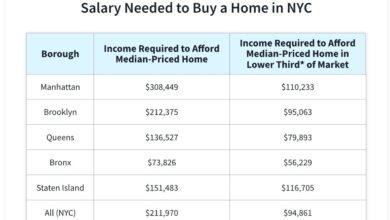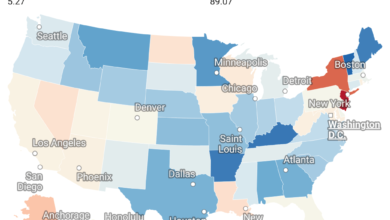Where America’s Middle Class Lives: The Top 20 U.S. Cities by Middle-Class Household Share

The middle class is often described as the backbone of the American economy, yet its size and strength vary widely across the country.
In recent years, the middle class in America has experienced a period of both challenge and change. While median household income has gradually increased, gains have been unevenly distributed across regions and demographic groups. Rising costs in housing, healthcare, and education have put pressure on many middle-income families, particularly in high-cost urban areas. Despite these pressures, a substantial portion of Americans still fall within the middle-class income range—roughly 50% to 60% of households nationally, according to recent Pew Research Center data.
However, this share varies widely by location, as local economies and living costs significantly affect purchasing power and quality of life. Our analysis highlights places where middle-class incomes not only exist but also represent a larger, more stable share of households, reflecting the nuanced geographic realities shaping the American middle class today.
What Is the Middle Class?
For this analysis, we define the middle class based on the Pew Research Center’s income thresholds: households earning between two-thirds and double the national median household income. In 2023, the national median household income is approximately $80,610.
Because living costs and household sizes differ greatly across the U.S., we adjust these income thresholds for:
- Household size: Larger households need more income to maintain the same standard of living.
- Local cost of living: Using the Bureau of Economic Analysis’s Regional Price Parities (RPP), which measure relative costs across regions, we adjust income bands to reflect true purchasing power.
For example, a family of four in a high-cost city like San Francisco needs a higher income to be considered middle class than a similar family in a lower-cost area like Cedar Rapids, Iowa.
How We Calculated the Middle-Class Share
- Income thresholds were set using Pew’s two-thirds to double the national median income formula, adjusted by household size multipliers.
- Local cost of living adjustments were applied using the BEA’s RPP data to scale income bands by the relative price level of each city or town.
- Household income distributions for all U.S. places (including cities, towns, and small communities) were extracted from the American Community Survey (ACS) 5-year data (2019–2023).
- For each place, we estimated the number and share of households whose incomes fall within the adjusted middle-class band, factoring in local cost of living and household size.
- We then ranked every U.S. place by the percentage share of middle-class households, highlighting the top 20 places where the middle class is most prominent.
Which Cities Have the Largest Middle-Class Shares?
Why These Places?
Many of these cities and towns share characteristics that foster a thriving middle class:
- Affordable housing and living costs, keeping income within the middle-class range.
- Diverse local economies with jobs in education, healthcare, manufacturing, and technology.
- Quality schools and amenities supporting family life and community stability.
- Moderate population sizes, often smaller metro areas or suburbs balancing opportunity and affordability.
The middle class remains a vibrant part of many American communities, especially in cities and towns where incomes stretch further thanks to affordable costs of living and stable economies. These places represent a snapshot of where the American middle class enjoys economic opportunity and a comfortable lifestyle.




